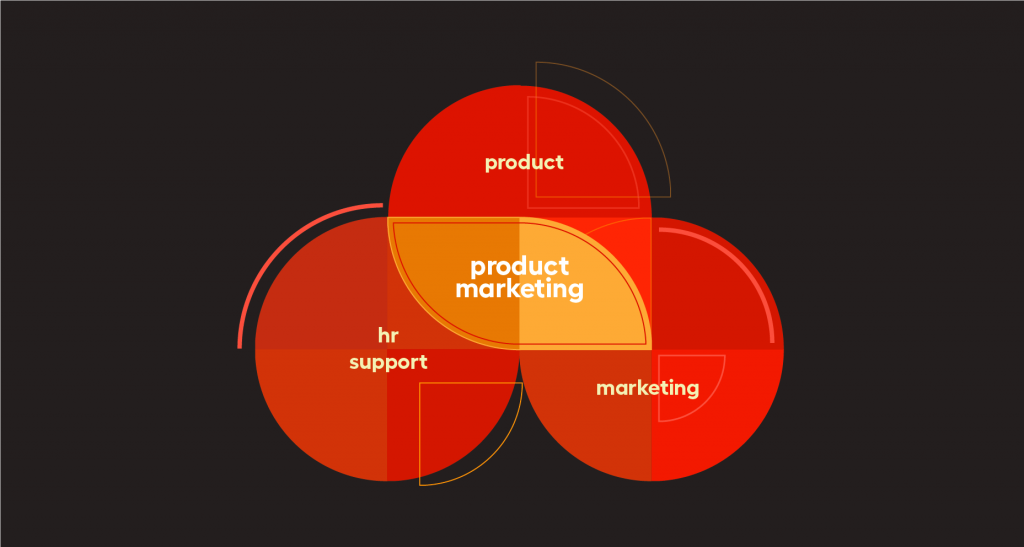During the annual madewithlove retreat in Greece, I gave a talk on what product marketing is and how modern teams should approach building a product. I had based my talk on my own experiences from the past year where I was seeing a lot of friction and struggles with how independent teams in a product company were working together.
It would often happen that the engineering team deployed changes or new features to production when they’d considered it to be finished. If it was a bigger feature the marketing team would send out an email announcement to customers either before or after the changes had been deployed.
Other departments of the company such as sales, marketing and support would be updated via a message on Slack saying that the feature is now available for everyone. But they would very often not understand the exact impact of the changes which made it very difficult to answer questions from customers.
Since I am a software engineer myself I was part of the problem. I wanted to improve this which lead me to research a better way to let this information flow through to every department of the company.
The role of product marketing
Launching new features suddenly and without warning is not a good move. Customers will get confused; products can look inconsistent; developers don’t like unexpected changes, and bugs in production are more stressful to deal with. A product needs a thorough plan to release new features.
Think of product marketing as being a part of product management. It’s a complementary role, such as quality assurance to engineering. It’s essentially a supporting role for other departments in the company.
Keep in mind that this does not have to be one person and that instead, it can be a shared responsibility within the company. If the company needs to scale because more products are being introduced it might be time to hire someone dedicated to this.

Let’s define some of the tasks that will help support the rest of the company.
Market research
The best products are built when there is a clear market in mind and product marketing can help define that market.
The following questions will help define a pricing and communication strategy:
- How do we position ourselves in the market?
- What separates us from other companies offering the same type of product?
- Who is our target audience?
When looking to improve the product it’s important to never assume how customers are using it and always go look at the data that is available. There are 2 big sources of information that can help:
- Support and sales teams, they are in contact with customers on a daily basis and will be the first to hear about any frustrations or features that are missing.
- Analytics such as Mixpanel or Amplitude give insights into how customers are (not) using the product.
The answers to these questions can be valuable input for product managers and designers. Identifying the right audience for doing user tests will result in better and actionable feedback.
Storytelling
The key to coming up with a good story is to ask what can be built to help solve a certain problem if there were unlimited resources.
Having a good story will not only help sell the product better once it has been launched but it also provides a way to get the product and team hyped up internally. To give an example, Hyperloop was able to get a $200 million investment without doing a single test just because their story was so powerful:
Sci-fi writers and dreamers have long envisioned ways to travel at high speeds through low-pressure tubes. The idea was simply waiting for the right combination of talent, technology, and business case to become a reality… Hyperloop will reinvent transportation to eliminate the barriers of distance and time and unlock unprecedented value for governments, businesses, and consumers.
Once the story is defined, it’s important that everyone commits to it. This means that the entire company needs this focus, from a salesperson talking to a potential customer to the advertisements that pop up while viewing our Instagram stories. It is the product marketer’s job to keep everyone aligned
Launching new features
There is a difference between deploying a feature and launching a feature. While the former is the responsibility of engineers and CTO’s, they should not be deciding on when a feature is launched.
A launch is much more than putting code online and requires a lot of preparation work, depending on the impact of the feature the following might be needed:
- A FAQ providing answers for possible questions that customers might have.
- A white paper or article that explains what the feature can be used for.
- Assets such as screenshots, videos and walkthroughs that detail how the new feature is used.
Especially with bigger features, it can become too much for a customer to handle. People don’t like change, they are already used to how the product works and making drastic changes to their workflow will result in frustrations and the feeling that the company is not keeping their interests in mind.
There are other risks when releasing everything in one big bang launch:
- It’s not possible to receive iterative feedback from real users, which makes it harder to tweak
- The more code that is changing, the more things that can go wrong and the harder it becomes to fix.
Using a segmented release strategy allows for only releasing a feature to a small part of the user base. If possible, try to include power users in the initial batch of users since they will provide the most useful feedback.
So who should be releasing features? Ideally, this responsibility would be with customer-facing employees such as marketers or sales. This ensures that the last people in the company to see the feature are also the ones that understand the customer the best.
Ideally, try and keep other departments up-to-date with any feature developments as often as possible to avoid information overload, some ways to do this:
- Invite sales, marketing and support teams to sprint demo meetings to go through the feature together
- Use a tool such as ChangeHub to provide internal changelogs.
- Document product specifications in the open so everyone can read up on which problems the feature wants to fix.
After launching a feature it’s a good idea to do a post-launch retrospective with everyone that was involved to help improve the process for future launches.
Conclusion
It’s not easy to launch a product and keep every single party in line and most importantly keeping existing customers happy. I firmly believe that product marketing plays an important role from the start of the development process, and arguably even from the design stage. In this post, I shared how product marketing fits into a company and which tasks they should be responsible for.
In an upcoming article, I will further elaborate on launching strategies and feature roll out —an important job for the product marketing team.
Further resources
- Role of Product Marketing in your startup
- Product Management vs Product Marketing
- Intercom on Marketing
- Working with Product Marketing









Member discussion